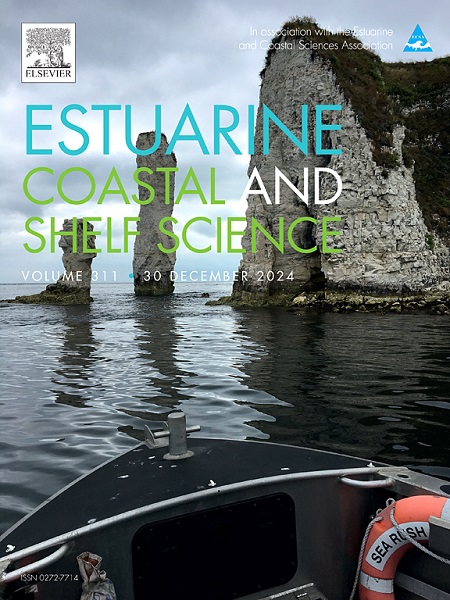Ichthyoplankton temporal and spatial patterns in sub-Antarctic coastal and oceanic waters of the Southwestern Atlantic
IF 2.6
3区 地球科学
Q1 MARINE & FRESHWATER BIOLOGY
引用次数: 0
Abstract
The southernmost region of the Southwestern Atlantic (SW Atlantic) has a complex environmental structure with different oceanographic conditions that aid the survival of early life stages of sub-Antarctic fish. This study evaluated the spatial and temporal variations in ichthyoplankton composition of SW Atlantic's sub-Antarctic coastal and oceanic waters and the relationship with environmental variables (water temperature and salinity). Six multidisciplinary oceanographic surveys (austral spring of 2014, 2015, 2016, summer of 2015, and autumn of 2016, 2017) were conducted in two coastal and three oceanic zones of the southern SW Atlantic. A total of 425 fish eggs and 871 fish larvae at the yolk sac (N = 37), preflexion (N = 513), flexion (N = 13), and postflexion (N = 308) stages were collected. Eleven fish taxa in the larval stage were identified. The highest abundance of eggs and larvae in the preflexion stage occurred in spring, dominated by the Fuegian sprat (Sprattus fuegensis) in all zones. However, the abundance of fish larvae in the postflexion stage was higher in autumn at the southern slope of the Burdwood Bank, with a dominance of Patagonian cods (Patagonotothen spp.). Water temperature played a significant role in explaining the abundance of larvae in the preflexion stage, whereas water salinity was significant for eggs and larvae in the postflexion stage. Our results allow us to infer the role of this complex oceanographic system in the early life history of fish. Thus, a conceptual framework for the ichthyoplankton distribution patterns in the area is proposed.

求助全文
约1分钟内获得全文
求助全文
来源期刊
CiteScore
5.60
自引率
7.10%
发文量
374
审稿时长
9 months
期刊介绍:
Estuarine, Coastal and Shelf Science is an international multidisciplinary journal devoted to the analysis of saline water phenomena ranging from the outer edge of the continental shelf to the upper limits of the tidal zone. The journal provides a unique forum, unifying the multidisciplinary approaches to the study of the oceanography of estuaries, coastal zones, and continental shelf seas. It features original research papers, review papers and short communications treating such disciplines as zoology, botany, geology, sedimentology, physical oceanography.

 求助内容:
求助内容: 应助结果提醒方式:
应助结果提醒方式:


